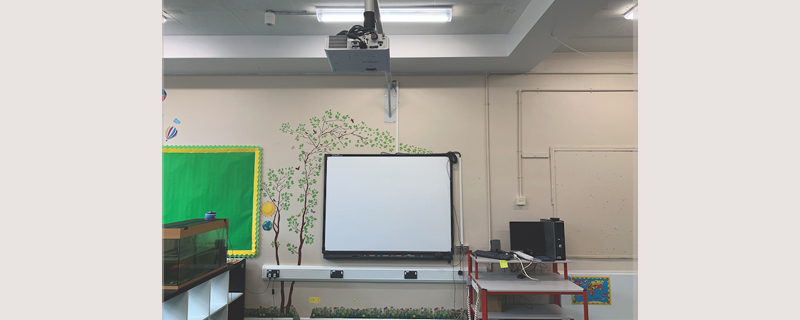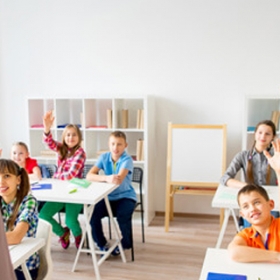‘Decarbonisation of the current building stock… is essential’
Kevin Mcguane, sector managing director – Energy Services DMA Maintenance, DMA Group,
discusses the challenges of rebuilding/refurbishing school buildings
The education sector has been at a crossroads this year. Firstly, a series of leaked government emails and documents, sent by senior officials working for the then education secretary Nadhim Zahawi, revealed that many UK school buildings are in such disrepair that they are a “risk to life”.
The officials called for the Treasury to make extra billions available to increase the number of school rebuilding projects from 50 a year to more than 300.
These wishes began to be granted as recently as July 2022 when it was announced that 61 schools will be rebuilt or refurbished through a £1bn fund as part of the government’s flagship School Rebuilding Programme. Buildings will be updated and modernised, while new sports halls, music rooms, science laboratories and dining areas will be included as part of the scheme. But there is a caveat to that…
If the UK is to have any chance of reaching its net zero 2050 target, decarbonisation of the current building stock, including independent schools, is essential.
According to the Department for Business, Energy and Industrial Strategy (BEIS), school buildings annually consume 5.4 TWh electricity and 16.2 TWh natural gas. This causes emissions of 4.1 million tonnes CO2 equivalent, out of which nearly three million tonnes are emitted by burning gas.
If the UK is to have any chance of reaching its net zero 2050 target, decarbonisation of the current building stock, including independent schools, is essential
According to the Carbon Trust, school buildings account for roughly 2% of the UK’s greenhouse gas emissions. In other words, the emissions contribution of schools is roughly the equivalent of the energy and transport emissions of Manchester, Newcastle and Bristol combined.
Independent schools must be decarbonised as part of the wider strategy to transition to a more sustainable overall building stock, and this must be carefully considered when retrofitting and refurbishing existing buildings across the sector.
Thankfully, there are many ways to reduce the carbon footprint of our school buildings. A key starting point is reducing energy demand and usage, which can be achieved through the installation of energy-efficient roofing, insulation, double or triple glazing, smart LED lighting systems, and enhanced maintenance and control regimes. This can all be underpinned by real-time, data-driven technologies such as building management systems.
Other renewable alternatives
Once efficiency improvements have been made, bigger steps, such as investing in heat pumps, wind, solar panels and waste heat recovery, can be taken. These are all capable of supporting the drive towards net zero.
But let’s talk about heat pumps a bit further. I agree that if we are to hit net zero emissions by 2050, gas boilers must go. However, as attractive as heat pumps may seem and sound, anyone across the independent education sector who is considering installing heat pumps should research the costs and logistics involved.
The capital costs involved in replacing a conventional gas boiler with a heat pump are huge by comparison, typically three times that of a conventional gas boiler. Not to mention the very long lead times to buy and install this renewable technology. These challenges are magnified by the exceptional macro-economic and geo-political events that currently conspire to compound our net zero objectives.
The one characteristic that does support carbon reduction/demand reduction are the repeated weather extremes and the huge increases in energy bills. Therefore, the government could support energy demand reduction with grants towards better insulation, double glazing, LED lighting, and better heating controls. Controls such as absence and presence detection can also ensure that lights are not left on.
It is also important to consider that, in this context, sustainability should look beyond environmental footprints as well. Yes, we need to transform our building stock to align with net zero targets, but we also need to create buildings and spaces that support our health – both physically and mentally.
This is a prominent and current issue facing commercial offices, and the same approach should be made by those across any education space.
Wellbeing has been pushed up the agenda in the past two years in light of Covid-19, and schools in particular have been identified as poorly ventilated spaces that are rarely equipped to prevent the spread of airborne viruses.
Making these adaptations can be tough in any building but they become much more challenging and complicated in historical buildings that simply weren’t designed with modern technologies and modern working practices in mind.
Retrofitting and refurbishing historical buildings
There are over 5,000 listed school buildings in England, and many are to be found in the independent sector.
Reducing the carbon footprint of these heritage buildings is a greater challenge, and potentially more expensive, but the environmental need to do so remains critically important. It is said that 80% of the buildings that exist around us today will still be in use come 2050.
Although alterations generally do not require planning permission, listed building consent is needed to make changes to certain features such as panelling, decorative architraves or plasterwork. Meanwhile, external work is rigorously regulated and also requires consent.
…as attractive as heat pumps may seem and sound, anyone across the independent education sector who is considering installing heat pumps should research the costs and logistics involved
Once a license is granted to carry out works on a historical school building, there is a need to consider the environmental implications of the retrofitting and refurbishing itself. These projects all generate their own embodied carbon emissions, so the materials used need careful consideration, as well as the processes deployed in terms of carrying the work out.
Indeed, there is little point in making upgrades if the carbon footprint of the materials used will take decades to offset with any gradual gains subsequently achieved by the project.
This level of consideration requires effective communication between all stakeholders to ensure expectations are understood and demands are met. It is only through communication and dialogue that the balance between preserving heritage and enhancing sustainability can be properly struck.
Bumpy road ahead
This is an exciting and intriguing moment in the story for independent schools. But given the number of listed buildings in the sector, the road to net zero isn’t likely to be a smooth one.
Buildings with poor temperature controls, or older buildings with poor fabric or insulation face many hurdles.
Retrofit, refurbishment and conversion all generate embodied carbon emissions so the number of materials used, the carbon content of these materials and how retrofit is carried out must be carefully considered upon any project.
On top of the demands of educating our young people, supporting net zero is a confusing prospect for schools. Many won’t even know where to begin, so getting sound advice at the start is vital.
Procuring an energy survey and audit that ensures appropriately prioritised approaches to suit your environment and your specific net zero plans are vital. Without it, you risk spending lots of money without a proper plan.
The ambition of delivering better, healthier, and happier school buildings with cleaner air remains in sight. But it will only be reached with genuine ambition and commitment.
Source: Independent Education Today





Leave a Reply
Want to join the discussion?Feel free to contribute!